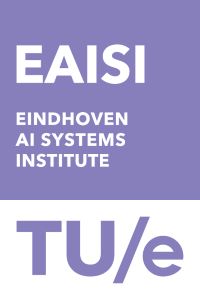| DURATION | PARTNERS | PROJECT MANAGERS | LINKS |
| December 2018 - November 2022 | Operations, Planning and Control
| PROJECT WEBSITE | |
Supply chains are developing into intelligent workflows, managed by real-time intelligence and actionable recommendations. To make fast and informed decisions supply chain managers need access to accurate, real-time, actionable data.
With the Internet-of-Things as a main driver, data-driven decision-making in logistics is now becoming feasible, but its successful implementation critically depends on the question “how?” To answer that question, innovative research in combination with real-world implementation is key. Therefore, we bridge the gap between “traditional” logistics’ decision-making and data analytics. The aim of this project thus is to develop, implement, and test data-driven methods for logistics. The focus is specifically on inventory management and last-mile transport.
Knowledge base
Within our context of inventory management and last-mile transport, the first step is to assemble a knowledge base for demand and supply data. Including more fine-grained demand data is a challenge but is increasingly receiving attention. This type of data improves demand estimation. Next to demand data, more and more data is available on the actual inventory and transport processes as well. Think of the out-of-stock data, availability of vehicles, the current inventory levels in each channel, or real-time travel times (congestion).
The knowledge base serves as a key input for improved operational processes and decision-making, which are the topics of two work packages: inventory transshipment and transportation. Both work packages deal, within their topical focus, on challenging data-driven offline (planning beforehand) and online (real-time during realization) decision making approaches.
Human and AI-enabled decisions
The role and contribution of AI to classical planning is identified as a key AI application domain before but has remained “a largely unsolved core AI competency due to the complexity of the tasks both in terms of representation as well as reasoning” (Sreedharan et al. 2020). We address this gap by alleviating the complexity of fully automated reasoning with abundant human expert and domain knowledge, leading to human and artificial intelligence enabled decision-making and support systems, with a focus on supply chains and logistics. Concluding, planning as we know it is certainly dead, but we envision the planning “nouveau” to be a “hybrid” form of decision-making in which both human and artificial intelligence are combined.
In order to research the explicit intertwining of technical and human elements in the context of AI planning for supply chains and logistics, the program needs a broad range of research fields and a rich set of involved companies. Hence, it combines the extensive knowledge of researchers from all multi-disciplinary IE&IS domains and the real-life living labs of European Supply Chain Forum companies from diverse industries.
The research program is a unique research and valorization network. It combines 25 Artificial Intelligence researchers from all multi-disciplinary IE&IS domains, 12 PhD students, and over 50 Bachelor and Master students, for five years (2021-2026).
Lateral transshipment
Companies rely on multiple strategies for achieving significant cost and service benefits that increase their competitiveness. A commonly employed strategy is to allow movement of inventories among companies (or sales channels of the same company, e.g. the as Jumbo supermarkets) as a response to customer demand. These stock movements are called lateral transshipment. It offers inventory optimization models for making optimal offline and online transshipment and rationing decisions. These models will use the demand and supply knowledge base of WP1. Offline models, based on updated demand and supply distributions, gives insights into:
- which inventory replenishment strategy is optimal,
- how much stock each company should reserve for high-priority demands,
- and the sequence of companies that each company should request transshipments from.



